Creating a kid-friendly home is a delightful journey, blending the creativity of design with the practicalities of everyday family life. Whether you’re just dipping your toes into the world of interior design or you’re a seasoned stylist seeking fresh ideas, this article is your roadmap to crafting spaces that are as functional as they are fun. Designing for children doesn’t just mean adding bright colors or playful patterns—it’s about creating environments that inspire learning, imagination, and comfort. You’ll discover innovative strategies that balance safety with style, ensuring every room caters to the needs and dreams of your little ones.
In the following sections, we will explore nine innovative ways to transform your home into a wonderland that both adults and children will adore. From multifunctional furniture that grows with your child to ingenious storage solutions that keep clutter at bay, these tips are designed to make your space both practical and enchanting. Whether you’re redesigning a nursery or revamping a playroom, you’ll find advice that meets you right where you are—no matter your level of design expertise. Get ready to unlock the secrets to a harmonious home that nurtures creativity and joy for the entire family.
Choosing Durable Kid-Safe Materials
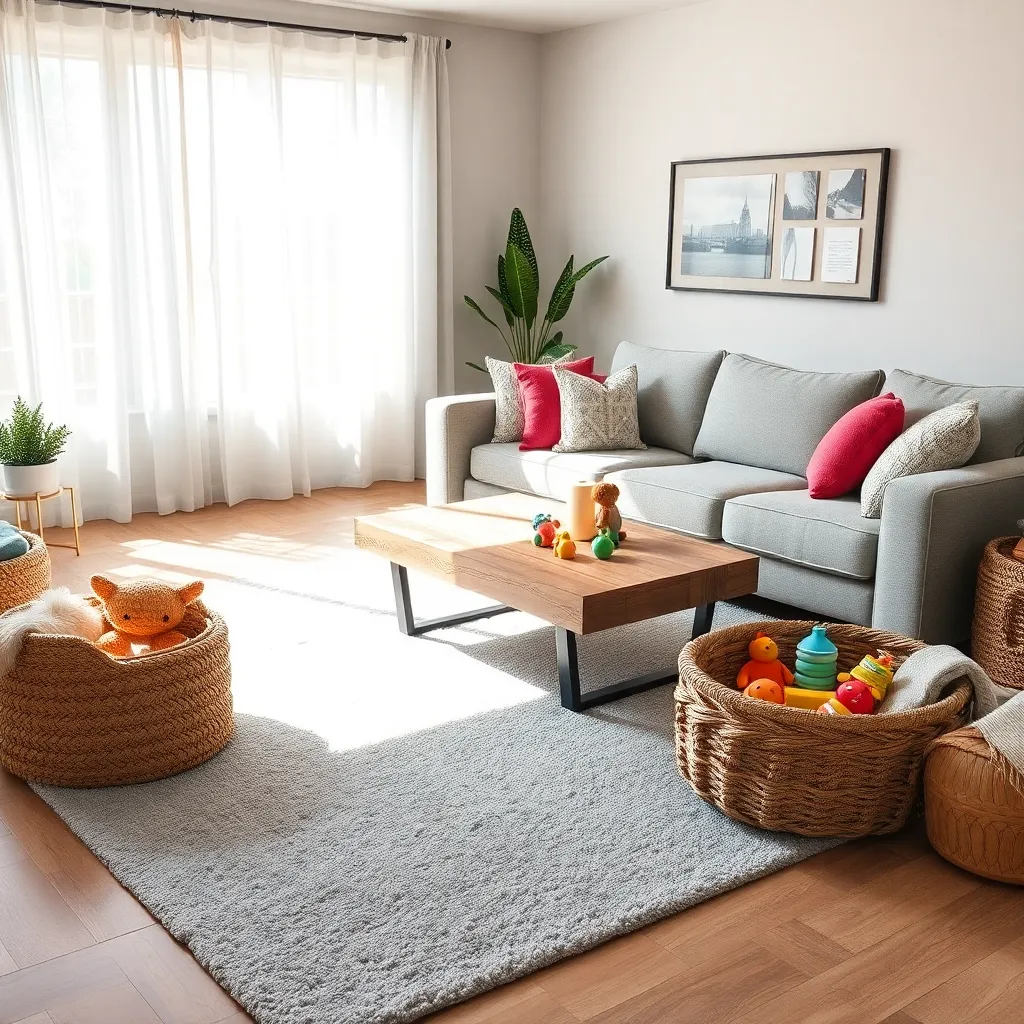
When designing a kid-friendly home, selecting durable and safe materials is crucial for longevity and peace of mind. Opt for furniture made from solid wood or metal as these materials are resilient and can withstand the wear and tear of active children.
Consider upholstery fabrics that are both robust and easy to clean. Materials like microfiber and leather are excellent choices because they resist stains and are simple to wipe down, making them ideal for high-traffic areas.
Incorporating non-toxic, low-VOC paints ensures that your walls remain safe for little ones while also being easy to maintain. Choose semi-gloss or satin finishes, as these are more washable and durable, perfect for spaces where fingerprints and smudges are inevitable.
For flooring, prioritize options that offer both durability and comfort. Cork and bamboo are sustainable choices that are not only gentle on small feet but also resist scratches, making them excellent for playrooms and bedrooms.
Crafting Engaging Play Areas
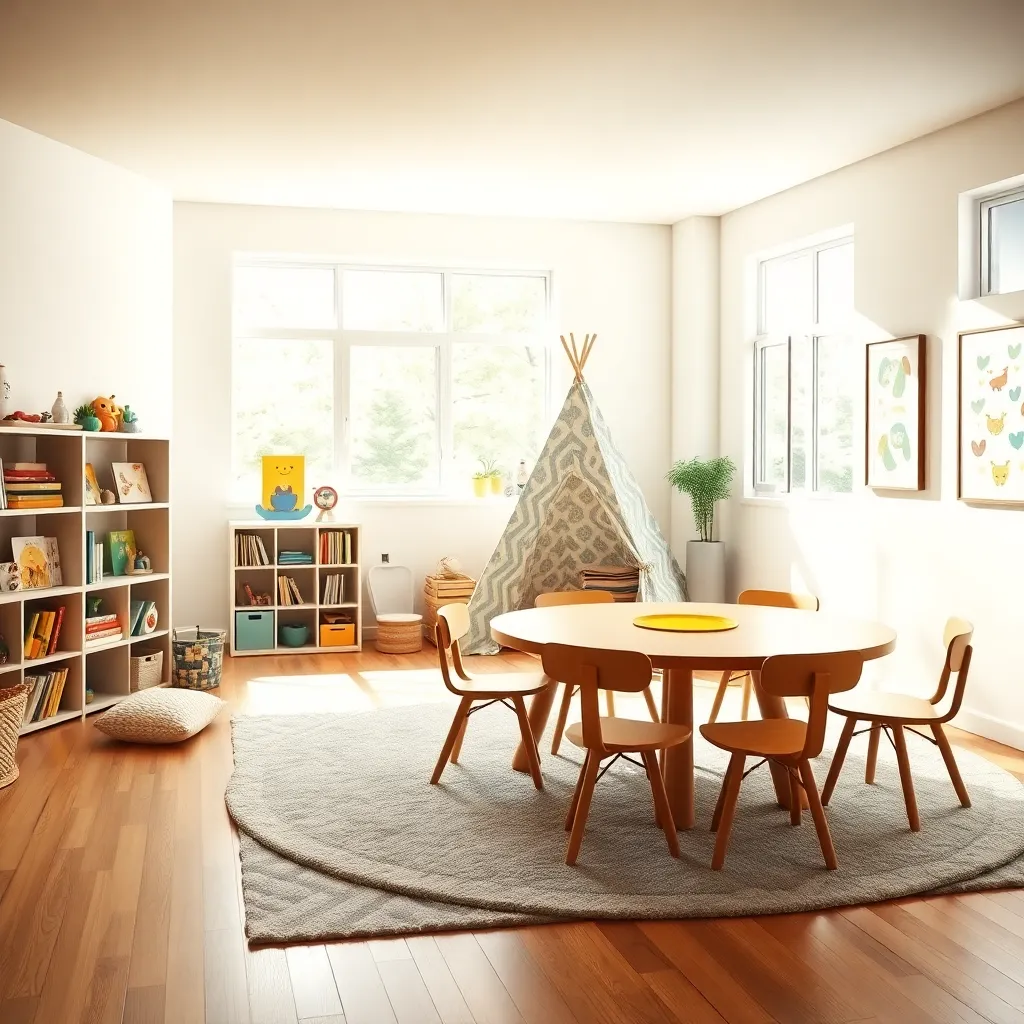
Crafting engaging play areas involves thoughtful consideration of both space and functionality. Start by selecting soft, durable flooring like foam tiles or plush carpets to provide a safe landing for active play.
Consider the use of multi-functional furniture to maximize space and utility in a child’s play area. A storage bench or a bookshelf with cubbies can serve both as a seating area and a place to keep toys organized.
Incorporating a vibrant color palette can stimulate creativity and joy. Use bold accent colors on walls or through accessories like cushions and bean bags to create a lively and inviting atmosphere.
For a more advanced touch, consider creating different zones within the play area, each dedicated to different activities. This could include a reading nook with a cozy chair, a creativity corner with a small table for arts and crafts, and an open space for imaginative play.
When it comes to decorating, involve your children in the process to reflect their personalities and interests. Displaying their artwork in frames or on a dedicated wall can personalize the space and encourage their sense of ownership and pride.
Incorporating Educational Decor Elements
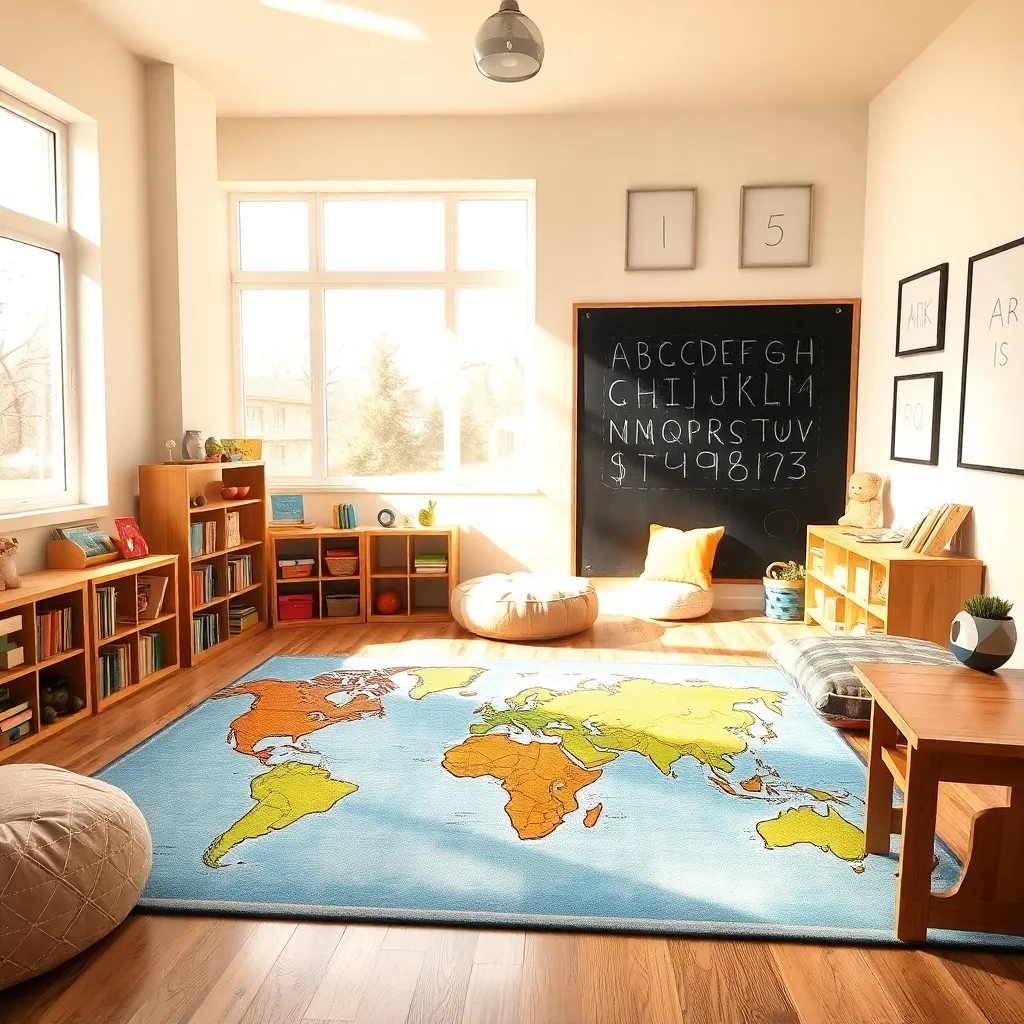
Incorporating educational decor elements into a child’s room can blend learning with everyday living seamlessly. Begin by selecting multifunctional furniture such as a desk that doubles as a chalkboard, which encourages creative expression while providing a space for homework.
Consider using wall decals or murals that feature world maps, the solar system, or alphabets to create visually stimulating environments. This approach not only brightens up the room but also offers constant engagement with educational content.
Opt for a color palette that is both vibrant and soothing, like soft blues and greens, which can enhance focus and calmness. Pair these colors with educational posters and framed artwork that highlight subjects your child is passionate about, fostering both interest and motivation.
Advanced decorators can introduce interactive elements such as a magnetic wall where letters and numbers can be rearranged for spelling and counting games. For an added layer of functionality, consider a reading nook with built-in shelves that encourage a love for books and provide a cozy retreat for quiet time.
Designing Flexible Storage Solutions
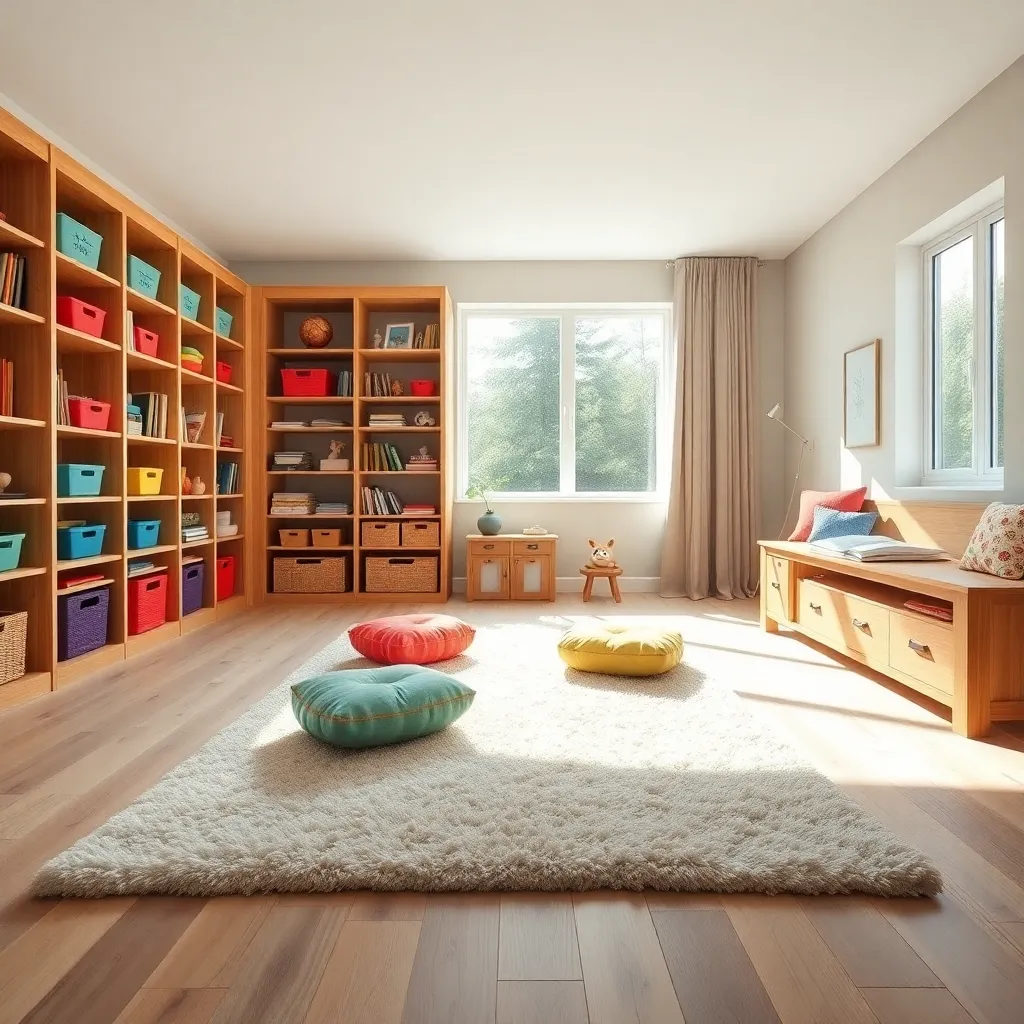
Creating flexible storage solutions is essential in a kid-friendly home, where needs and belongings constantly evolve. Begin by choosing multipurpose furniture, such as a bench with storage space underneath, which serves dual functions without taking up extra space.
Consider using modular shelving units that can be reconfigured as your child’s needs change. This flexibility allows you to easily adjust the height and layout of shelves to accommodate everything from small toys to large books.
Incorporate storage bins and baskets in your design for a simple and effective way to keep toys organized and out of sight. Opt for color-coded storage to teach kids organization skills and make cleanup time more engaging.
For advanced decorators, integrating built-in storage solutions can offer a seamless look while maximizing space. Use materials like durable laminate or hardwood for longevity, and match them to your existing decor for a cohesive appearance.
Utilizing Multi-Functional Furniture
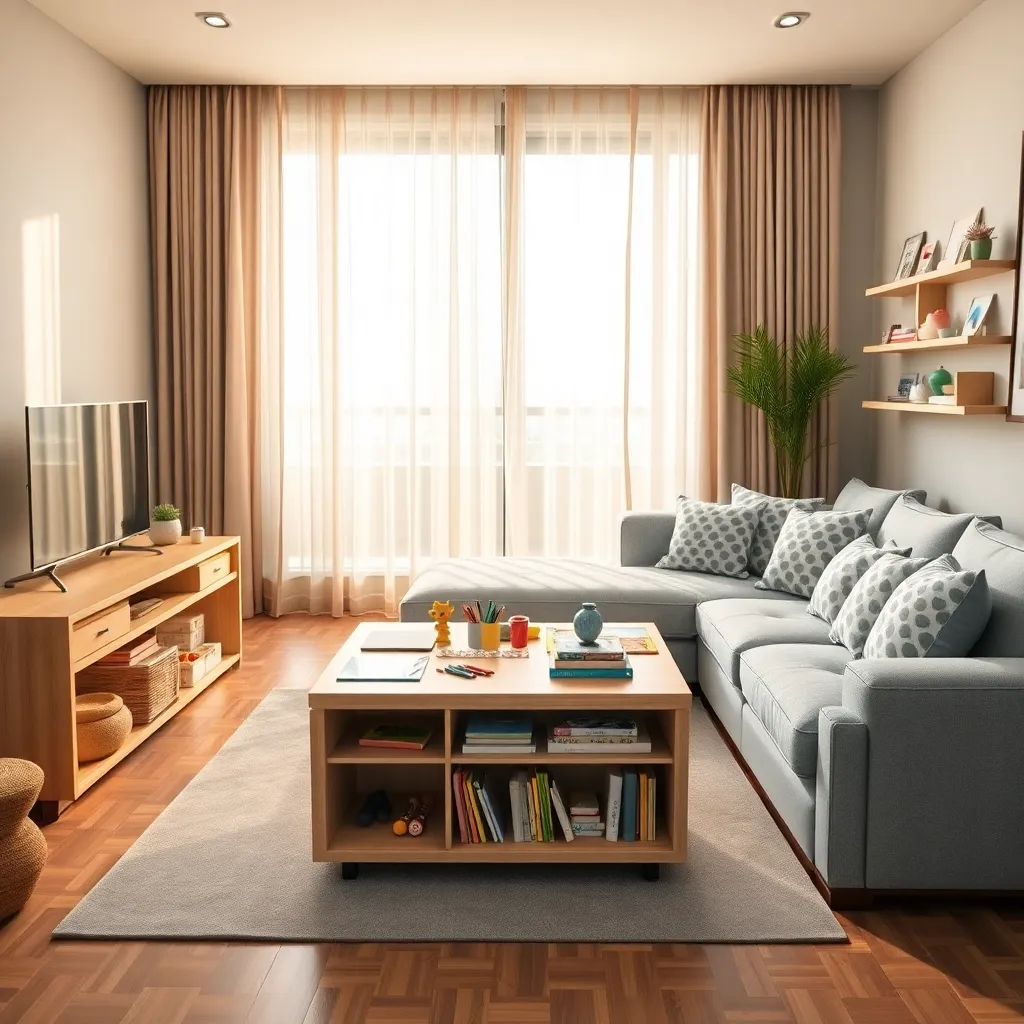
Incorporating multi-functional furniture in a kid-friendly home can maximize space while maintaining a stylish environment. Consider pieces like a sofa bed or an ottoman with storage, which provide dual purposes and help keep the area organized.
Opt for furniture with durable materials that can withstand the wear and tear of daily activities. For example, a dining table with a scratch-resistant surface is ideal for families with young children who may use it for both meals and crafts.
Choosing neutral tones for large pieces can make a room feel cohesive and flexible for future style updates. Add pops of color with interchangeable accessories like cushions or throws, which can be easily updated as your children grow.
For advanced decorators, consider investing in modular furniture that can adapt as your needs change. Modular shelving units or a sectional sofa can be reconfigured to suit evolving family dynamics and room layouts.
Balancing Safety with Style
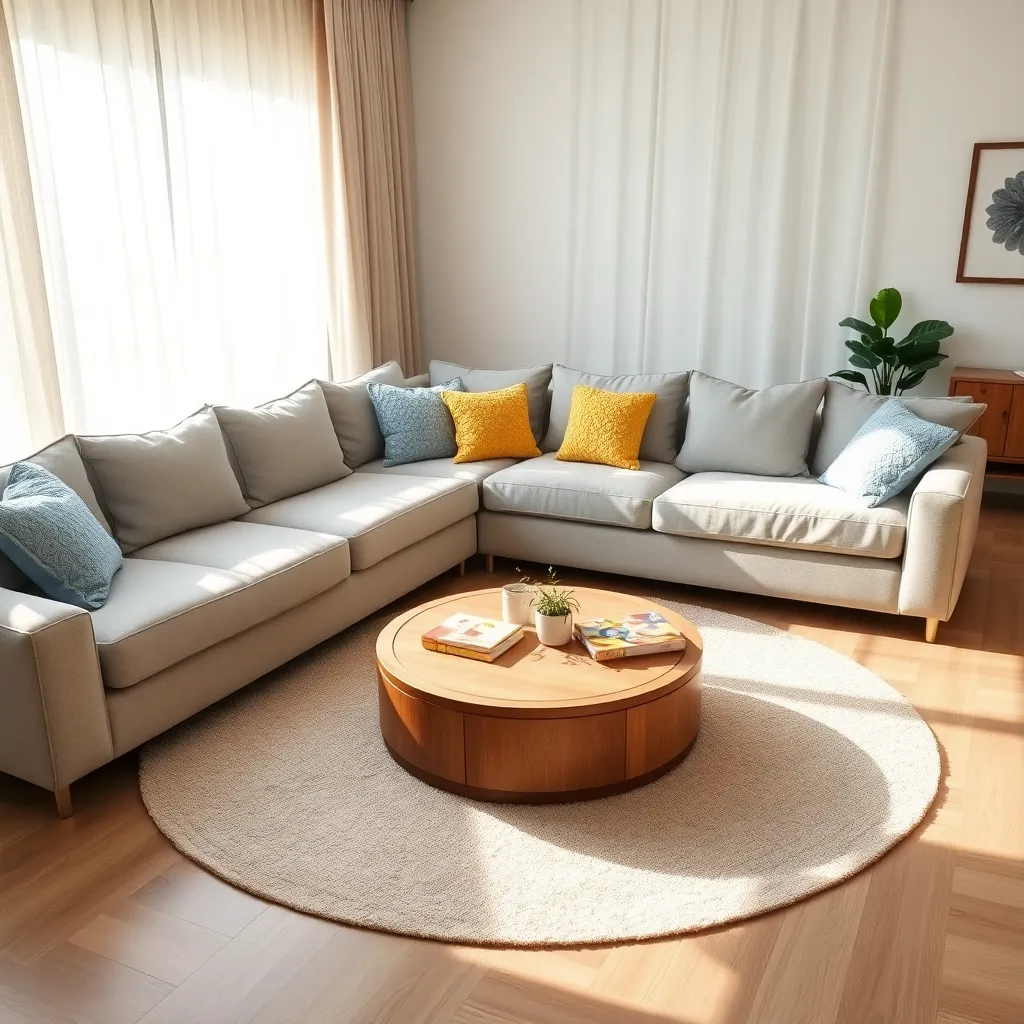
When designing a kid-friendly home, safety and style must go hand in hand. Opt for furniture with rounded edges to prevent injuries, and choose materials such as soft, durable fabrics that can withstand both spills and active play.
Consider installing slip-resistant rugs to add warmth and texture to a room, while also minimizing the risk of falls. Use vibrant colors like blues and greens, which are both visually stimulating and capable of camouflaging minor stains.
For window treatments, select cordless blinds or shades to eliminate potential choking hazards. Secure furniture items such as bookshelves and dressers to walls using brackets, ensuring they remain stable even when climbed on by curious little ones.
Beginner decorators should focus on creating a layout that allows for easy supervision and flow. Advanced decorators might integrate smart home technology to monitor safety, such as motion sensors for nighttime navigation or temperature controls for optimal comfort.
Integrating Interactive Learning Spaces
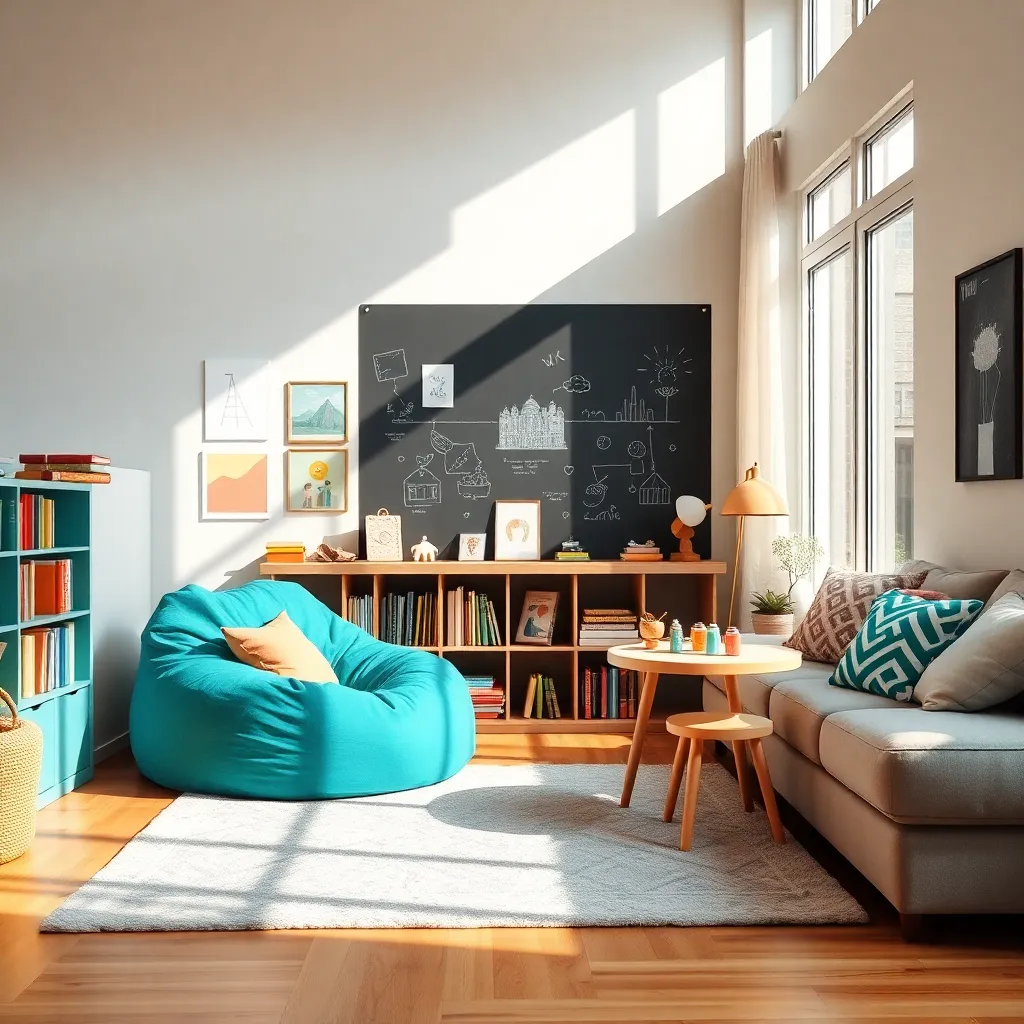
Creating interactive learning spaces in a kid-friendly home can significantly enhance both fun and educational experiences for children. Start by selecting furniture that encourages engagement, like adjustable desks and chairs, which can adapt as your child grows.
Consider setting up different zones within the learning space to cater to various activities such as reading, crafting, and technology-based learning. Use rugs or floor cushions to define these areas, making them inviting and comfortable for children to explore and learn.
Incorporate a vibrant color palette to stimulate creativity and excitement. Opt for colors like soft yellows or light greens on walls and furniture, which are known to boost concentration and calmness.
For advanced decorators, integrate smart technology, such as interactive whiteboards or tablets, to offer diverse learning opportunities. Position these tools at an accessible height, ensuring they are easy for children to use independently.
Maximizing Small Spaces Effectively
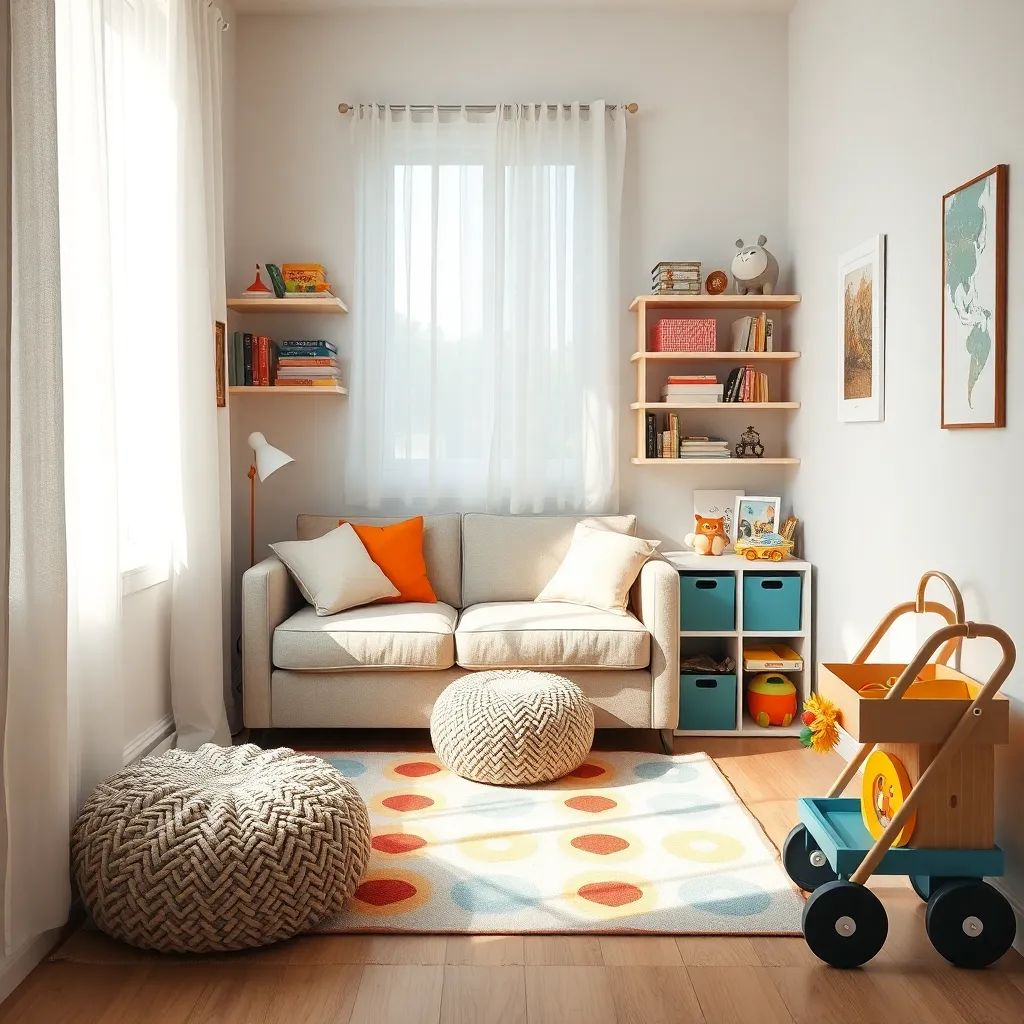
When working with small spaces, choosing the right furniture is crucial. Opt for multi-functional pieces like a bed with built-in drawers or a sofa that doubles as a storage unit to maximize every square inch effectively.
Color plays a significant role in making a small room feel more open. Light tones such as soft whites, pale blues, or gentle greys can create an airy feel, while strategically placed mirrors can reflect light and add depth to the space.
Vertical space is often underutilized in small rooms. Installing wall-mounted shelves or tall bookcases can provide essential storage without encroaching on valuable floor space, allowing you to maintain a clutter-free environment.
For a more advanced approach, consider incorporating sliding doors or pocket doors to save space usually taken up by traditional swinging doors. Additionally, use transparent or translucent materials for partitions to separate areas without making them feel closed off.
Inspiring Creativity with Colorful Designs
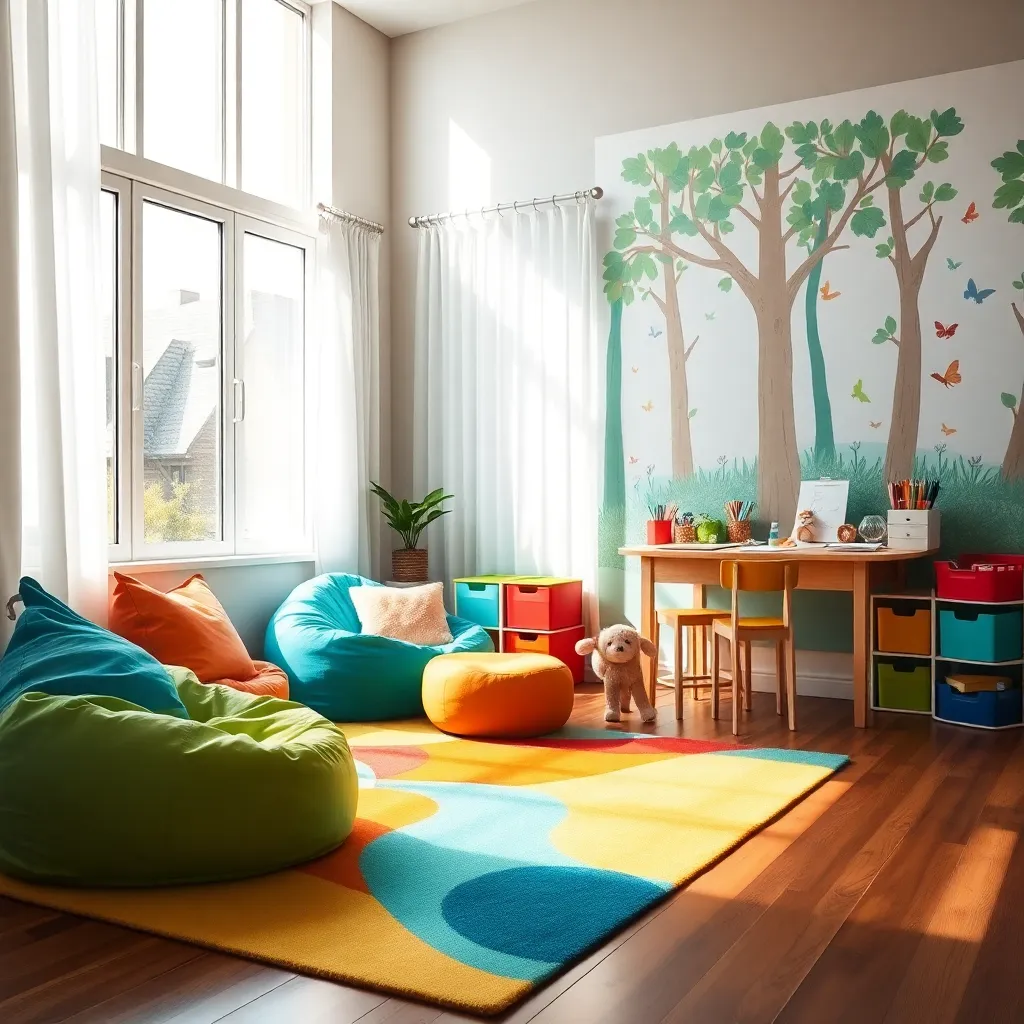
Inspiring creativity with colorful designs is essential in crafting a kid-friendly environment that encourages imagination and play. Start by choosing a vibrant color scheme that includes both primary colors and softer pastels to maintain a balance between energy and calmness.
Consider incorporating a feature wall with chalkboard paint or a mural that reflects your child’s interests, such as animals or outer space. This interactive element not only adds visual interest but also provides a canvas for your child’s creativity to flourish.
Furniture selection is crucial; opt for pieces that are both colorful and functional. Look for modular furniture that can easily be rearranged or expanded as your child grows, ensuring versatility and longevity in the design.
Accessorize with colorful, yet durable, textiles like rugs and throw pillows made from stain-resistant materials to withstand the rigors of playtime. Mix patterns and textures to add depth and interest, while maintaining a cohesive look with the overall color palette.
Conclusion: Growing Success with These Plants
In designing a kid-friendly home, we explored nine essential relationship concepts that can enhance both your living space and family dynamics. First, we discussed the importance of safety, ensuring that your home is a secure haven for your little ones. Next, we delved into the power of creating adaptable spaces that grow with your children. We emphasized the need for organization, making room for effective storage solutions to maintain harmony. Incorporating learning zones and fostering creativity were highlighted as key to nurturing young minds. We also touched on the benefits of shared spaces that encourage family bonding, as well as the inclusion of personal areas for each child to express themselves. The balance between aesthetics and functionality was addressed, along with the importance of eco-friendly choices that teach sustainability.
Now, take a moment to evaluate one room in your home and implement one of these concepts today. Remember, small changes can lead to significant improvements in family life. Bookmark this article to revisit these ideas as your family evolves. By committing to thoughtful design, you’re investing in a future where your home strengthens your relationships and nurtures success. Together, let’s build spaces that not only house our families but also foster love and connection.
